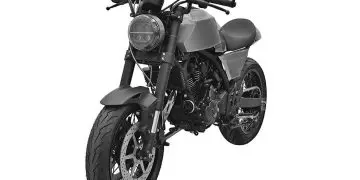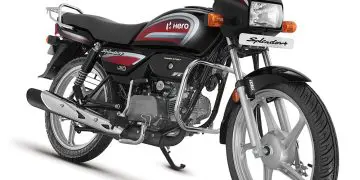The technological competition between manufacturers, resulting from the 1980s racing replica boom, produced high-performance motorcycles year after year. Development competition in the 250cc class was particularly intense, and models equipped with DOHC 4-valve, 4-cylinder, water-cooled engines with 45 hp, starting with Yamaha’s FZ250 Fazer, underwent model changes every year, leading to the boom of racing replica motorcycles. The DOHC 4-valve, 4-cylinder, liquid-cooled engine was carried over to the naked bike boom that followed the racing replica boom, and several model variants were created.
In 1983, before the introduction of the Fazer, Suzuki had released a model equipped with a liquid-cooled DOHC 4-cylinder engine, the GS250FW, but it was a 2-valve version with a maximum power of 36 hp. The next model, the GF250, introduced in 1985, inherited the 2-valve engine, but the maximum power was increased to 41 hp.
In 1987, the first GSX-R250 with a liquid-cooled 4-valve, 4-cylinder OHC engine of 45 hp appeared, and in 1989, the model was changed to GSX-R250R with an aluminum frame.
Suzuki’s 250cc naked models include the Cobra, a street-fighter version without fairing of the GSX-R250R, and the GSX250S Katana, which reproduced the style of the famous 1980s GSX1100S Katana in a 250cc fairing. The lineup included the Bandit 250, a European model with a beautiful design. The Bandit 250 was the only one of these three models to undergo a complete model change, and the Bandit 250V presented here was the second-generation model added to the lineup in 1995.
The second generation of the Bandit 250 further refined the beautiful European design of the first generation and its dry weight was reduced by 12 kg, from 156 kg to 144 kg. The engine maintained the same 40 hp version, but the aluminum swingarm and radial tires made it more sporty. While the first thing people talk about with the Bandit is its beautiful design, the most notable aspect of the Bandit 250V is its engine. The engine, which Suzuki calls the VC engine (VC = Variable Valve Control), is the only one in the 250cc class to feature a variable valve timing mechanism. Variable valve control is well known in the Honda CBR400F (REV) and CB400SF (Hyper VTEC), but these Honda systems alternate between operating with 2 and 4 valves. In contrast, the Suzuki VC engine had a single camshaft with camshafts for low and high speeds, and the valve lift and timing were changed by shifting the camshafts. This VC engine had already been used in the Bandit 400, and the technology was well established. The VC engine had oscillators for the low-medium and high-speed camshafts, and the CPU controlled the timing of the low-medium and high-speed camshafts based on throttle opening, engine speed, and gear position.The 250cc 4-cylinder DOHC engine, which was revved to very high speeds, inevitably lacked torque at low revs. This VC engine compensated for this weakness and managed to achieve power in the low and medium rev range and a feeling of power at high revs. However, in the early 2000s, the popularity of motorcycles had declined and the Bandit 250V was discontinued in 2000.
With the reduction in the size of the 250cc category, this 250cc VC engine disappeared, only to be installed in the Bandit 250V. However, there is no doubt that this engine was the most advanced among the 250cc 4-valve, 4-cylinder DOHC engines, with which all manufacturers were competing in terms of technology.








